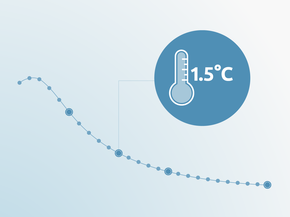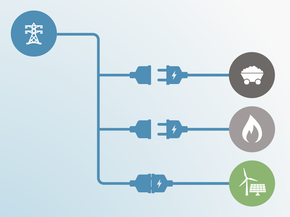Current Policy Projections
Economy-wide
Neither implemented nor planned policies are sufficient to achieve the Philippines’ NDC target.[1] Emissions growth will be predominantly driven by increased emissions from transport and coal-fired electricity generation.
Without the full implementation of the renewable energy and energy efficiency targets, emissions under current policies (excluding LULUCF) are expected to increase up to about 215 MtCO2e in 2020 and 315 MtCO2e in 2030 (see ‘Current policy projections’ in the graph). However, if the current upswing of development in coal power plants were to continue, this would represent a significant emissions contribution that would strongly limit the country’s capacity to achieve its target.
If the Philippines fully implements current policies and proposed targets, most notably the tripling in renewable power capacity by 2030, compared to 2010, and achieves the 10% energy efficiency target, total GHG emissions in 2030 could decrease to approximately 280 MtCO2e (see ‘Planned policy projections’ in the graph). This would be a reduction of 12% in 2030 compared to our current policy projections (or BAU for the NDC calculation), compared to a 70% reduction in the NDC.
The National Climate Change Action Plan (NCCAP) offers a framework to implement mitigation and adaptation strategies and involves institutional changes and capacity building to facilitate climate change policies. However, the NCCAP in itself does not enforce quantifiable measures, so the targets from the NCCAP are not included in current policy projections.
The Department of Energy approved the Energy Efficiency Roadmap in December 2014 (covering the period 2014–2030) and its corresponding short-term Energy Efficiency Action Plan in December 2015 (for the planning period 2016-2020), both of which have been prepared with the support of the European Union (Department of Energy, 2016b).
Overall, the Energy Efficiency Roadmap mandates energy savings equivalent to 10% across energy demand sectors in 2030, compared to the reference energy demand outlook. Both policy documents list various measures to enhance energy efficiency in the buildings, industry, energy supply, and transport sectors. The Energy Efficiency Action Plan is being implemented by the Energy Efficiency and Conservation Division of the Energy Utilization Management Bureau of the Department of Energy, but the extent and coverage of implementation is unclear.
The current policy projections only include those efficiency measures which had been under implementation at the end of 2015, which is the cut-off date of the APERC Energy Demand and Supply Outlook (APERC, 2016) for the Philippines. The full implementation of the Energy Efficiency Roadmap and the Energy Efficiency Action Plan is considered in the ‘planned policy projections’.
[1] Given that the BAU in the Philippines NDC is not defined and we use our current policy projections instead (current policies projections = BAU per definition), the analysis cannot fully determine whether the current policies would lead to levels above or below the NDC target under different BAU assumptions. However, for a 70% reduction to be above the current policy projections, the BAU would have to reflect a very strong emission increase from today’s level.
Energy supply
The Philippines’ electricity mix relies heavily on coal-based generation, accounting for 48% of total electricity generation in 2016 (Department of Energy, 2017a). Recent statements from energy department officials in October 2017 imply that the proposed energy mix until 2030 would remain the same even after the Philippines ratified the Paris Agreement on climate change (Flores, 2017). In line with the government’s plan to reach the goal of energy self-sufficiency and its Coal Roadmap 2017–2040 (Department of Energy, 2017b), the Energy Department started to bid out new coal exploration and development contracts in the Philippines in October 2017. As of July 2017, 4.45 GW of new coal plants were under construction in the Philippines, with a further 8.55 GW in the pipeline (Coalswarm, 2017). The country’s total installed capacity reached 21.4 GW in 2016 (with coal accounting for 35%), up from 18.8 GW in 2015 (Department of Energy, 2017a).
In contrast to these recent developments, the Renewable Energy Act of 2008 aimed to accelerate the exploration, development and utilisation of renewable energy in the Philippines. Launched in 2011, the National Renewable Energy Program (NREP) serves as the blueprint for the implementation of the Renewable Energy Act of 2008 by planning to triple the 2010 renewable energy capacity level from 5.4 GW to 15.3 GW until 2030 (IRENA, 2017). In its Coal Roadmap 2017–2040, the government announced its intention to review and update the NREP over the course of 2017 and 2018 (Department of Energy, 2017d)
Mandated under the Renewable Energy Act (2008) as one of five policy mechanisms to promote renewables deployment, a feed-in tariff applicable to solar, wind, biomass and run-of river hydropower has been implemented in 2012. As of December 2016, a total of 178 projects with a total capacity of about 3.0 GW have been accredited, with an additional 22 projects with a total capacity of about 1.6 GW being considered for nomination (Department of Energy, 2017c). Due to the delayed implementation of other policy instruments under the Renewable Energy Act (2008) such as a Renewable Portfolio Standard (RPS), the fulfilment of the renewable energy capacity set in the NREP has been delayed significantly and it remains unclear whether the planned capacity expansion can be achieved (IRENA, 2017).
As for the renewable energy capacity to be installed under the National Renewable Energy Program (NREP), the BAU scenario of APERC Energy Demand and Supply Outlook (APERC, 2016) used for the current policy projections considers all committed renewable energy projects and the overall renewable energy historical capacity trends as of the end of 2015 (APERC, 2016). The planned policy projections further consider the full implementation of the renewable energy targets specified in ‘The National Renewable Energy Programme’.
Forestry
Data on LULUCF reported in the latest official national inventories showed that emission decreased from nearly zero in 1994 to a net sink (removal of CO2 from the atmosphere) of 105 MtCO2 in 2000 (UNFCCC, 2017). This change between 1994 and 2000 is partly attributed to changes in definition of forests and availability of data (Government of The Philippines, 2014). A logging ban on old-growth forests in the 1990s may also have contributed to the net removal of GHG emissions (Asia-Pacific Forestry Commission, 2001). High uncertainty remains about the actual emission and/or removal levels in the Philippine LULUCF sector. For instance, the FAO estimates the LULUCF was a net sink of 2.6 MtCO2 in 1994 and 2000 with the sink increasing to 60.4 MtCO2 by 2014 (FAOSTAT, 2017). The FAO estimate for 2000 differs very substantially from the official national inventory for the same year.
The Philippines’ plans to improve monitoring, assessment and implementation of the national REDD+ strategy (Department of Environment and Natural Resources, 2010), which could contribute to reforestation. In addition, a ban on cutting and harvesting in natural and residual forests throughout the country has been introduced by executive order in 2011 (President of the Philippines, 2011). There are no BAU projections on LULUCF provided in the NDC, resulting in large uncertainties on future emissions and/or removals. We assume LULUCF emissions in 2030 are near zero, in line with the most recent estimate of actual LULUCF emissions in the Philippines from FAO (FAOSTAT, 2016) for 2012.
Further analysis
Latest publications
Stay informed
Subscribe to our newsletter





